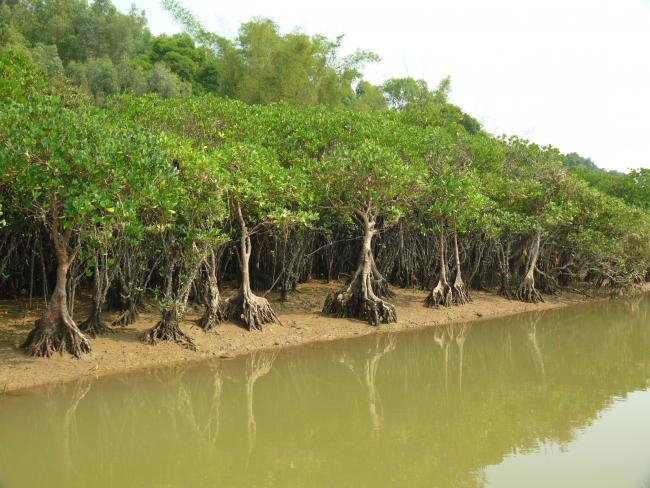The Gulf of Beibu is located in the north-western part of the South China Sea. In former times, its coast was fringed by extensive mangrove forests, the typical vegetation of tropical intertidal zones. Mangroves belong to the most productive ecosystems on earth, offer habitat to many organisms, and function as nursery for fish, crabs and shrimps. Mangroves also contribute to the stabilisation of coastlines and regulate the exchange of nutrients between land and sea.
The input of dissolved and particulate matter to estuaries and coastal seas has been severely modified and enhanced by sewage input, fertilizer use, and intensive aquaculture. At present, the Gulf of Beibu is impacted by several densely populated coastal regions of China and Vietnam. In the province of Guangxi, where the project will be carried out, mangroves have undergone widespread conversion into shrimp ponds, which has severely reduced the natural filtering function of mangroves and additionally pollutes adjacent water bodies.
A major aim of the project is to investigate the role of mangroves in the transfer of material from land to sea. Special emphasis is put on the effect of shrimp aquaculture. The distribution of dissolved and particulate substances (i.e. N and C) in mangroves and coastal waters, as well as the biogeochemical composition of sea grasses, will be used as an indicator for the inputs. In cooperation with the other subprojects we will investigate how alterations on land and anthropogenic inputs will influence the open waters of the Gulf of Beibu.
Project Partners (Germany) |
International Project Partners | |
|---|---|---|
|
Leibniz Institute for Baltic Sea Research Warnemünde (Coordinator) Leibniz Centre for Tropical Marine Research (ZMT) |
Guangxi Mangrove Research Center / Guangxi Marine Environment & Coastal Wetland Research Center (Beihei, China) |





